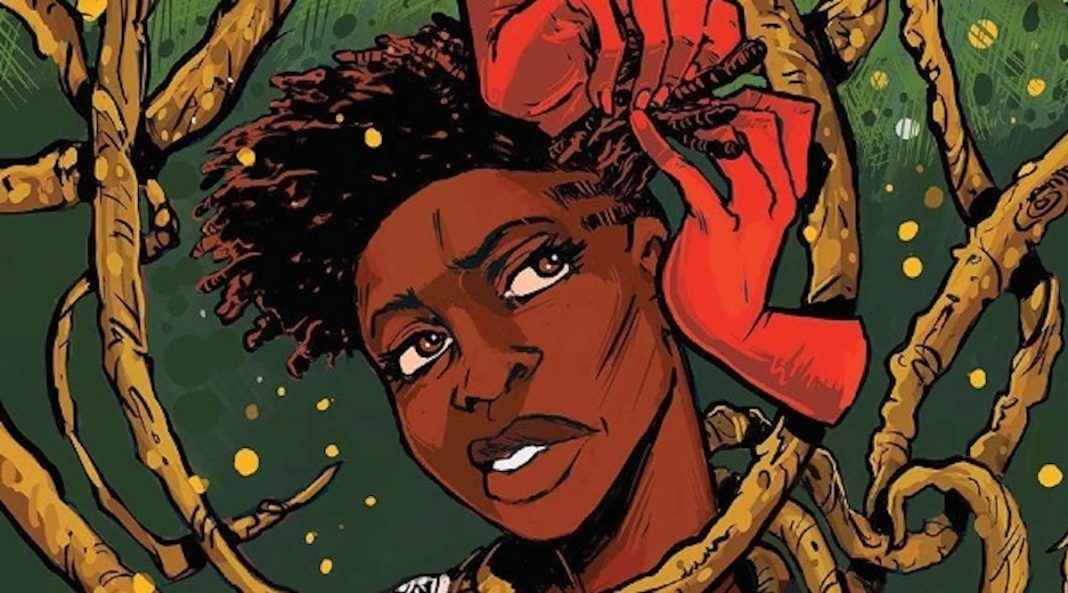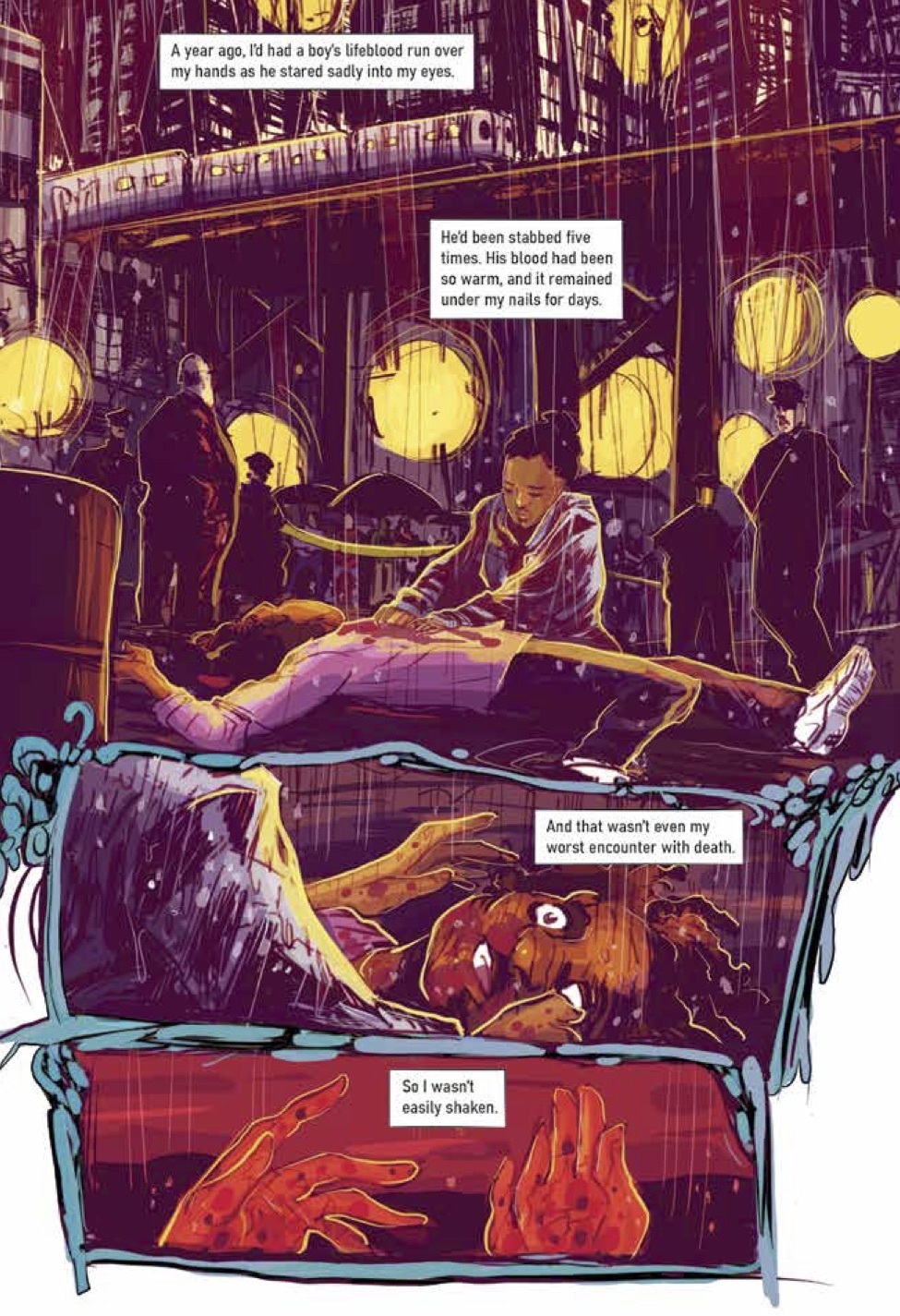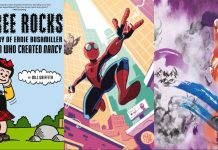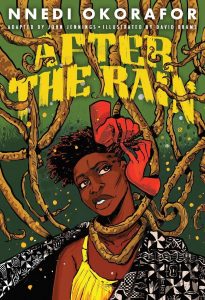
After the Rain is a graphic novel adaptation of a short story by Nnedi Okorafor, written by John Jennings, illustrated by David Brame, and with letters by Damian Duffy.
After the Rain follows Chioma, a young Nigerian American woman who has a chilling encounter during a visit to her grandmother in Nigeria. What does the mysterious encounter mean? And is it possible that it might have consequences that will affect the very course of Choima’s life?
The Beat caught up with Jennings to find out more about adapting prose and find out what comics he’s been reading lately!
AVERY KAPLAN: This graphic novel was adapted from the short story “On the Road” by Nnedi Okorafor, and your previous work includes the graphic novel adaptation of Octavia E. Butler’s Kindred. Can you tell us a little bit about the process of adapting prose to the medium of comics?
JOHN JENNINGS: The first thing to always remember is that whenever you are adapting something into another medium you are already inherently changing the nature of the narrative. Each medium has its own set of affordances. So, after reading the story a number of times, you have to first assess which aspects of the prose story transfer well into the comics medium and then decide how to articulate the atmosphere of the story with comics.
For Kindred, it was Damian Duffy’s charge to take the precious prose of The Grande Dame of Science Fiction and translate all the affect, pain, and power of that story into a script. Then I had to take that script and figure out how to bring the story to life panel by panel.
I’d been wanting to adapt “On The Road” for about seven or eight years and Nnedi was kind enough to let me do it since it was an older short story of hers. So, I printed out the story and made notes all over it. Trying to figure out how many pages different passages would end up being. I made a ton of thumbnails for it and I eventually broke down the whole story into a series of loose sketches. I was going to write and illustrate the whole thing and I actually have early samples from those attempts. Ironically, after Kindred, things got very busy and I made a lot of life transitions. I got married. I switched jobs. I did a fellowship at Harvard. So, I never had time to do “On The Road”! I asked my good friend and collaborator David Brame to do the drawings for me to color and that’s how we ended up partnering up on After the Rain. I basically took the sketches that I created and typed them out as a full script for the ABRAMS editors and for David. He put his amazing touch on the images and then I colored them. After that Damian did our lettering!
Turning prose into comics is hard work. You have to ingest the original story and figure out the main core of the story and then really painstakingly figure out which single images convey the images in the minds of the readers. Creating characters is tough because you have to find descriptions of the characters and try and glean what they look like. We even tried ‘casting’ actors who looked like the characters from Kindred, for instance. I was fortunate that Nnedi was able to give us some direction on character designs for After the Rain.
KAPLAN: Is there something about speculative fiction that makes it particularly ripe for comics adaptation?
JENNINGS: I feel that there is a surreal quality to comics. There’s this strange ambiguity to the medium that lends itself to metaphor, allegory and symbolic nuanced narratives. Most speculative fiction is really about the world outside our windows. However, it uses these narrative devices to give us distance from reality in order to see it with new eyes. I think that comics give us a new vocabulary for the speculative and enhances the narrative when executed well. For instance, Nnedi writes about a smell that was like smelling “death and life at the same time.” We were challenged to then draw a smell! I came up with a symbol that popped up every time this supernatural scent occurred. We created a flower with a skull in the middle! So, the audience subconsciously learns that when that symbol appears something uncanny is about to go down.
KAPLAN: Many pages of After the Rain have artwork that appears between the panels. Was this stylistic flourish inspired by anything in particular?
JENNINGS: One thing I love about the comics medium is the fact that every aspect of a comics page can transmit a part of the story. So, the typefaces you choose, the line weight, and even the gutter (the space between the panels) can all convey narrative beats. So, when we talked about the story, we really wanted the panels to be the “real” world while the gutter represented the “ghost world” so, to speak. So, we loved making these lush images together that slowly creeped into the actual panels from the strange spaces in-between reality and the supernatural. It was a great way to actually illustrate the tensions described in Nnedi’s short story. We felt that it adds a sense of dread because the audience can see the darkness between the panels but the character can only sometimes smell the entities or sense them. It was fun making poor Chioma terrified. The audience is also part of the torture too as they see this strangeness but can’t warn our heroine.
KAPLAN: After the Rain is set in a rural village in southeast Nigeria during Harmattan. Is there a reason for the story to be set during this time of year?
JENNINGS: I am not from Africa but, I have read that the time of Harmattan winds bring change of some kind. So, I am assuming that the revelations that happen to Chioma are related to that possible symbolic connection.
KAPLAN: Would you tell us about the name “Megascope,” inspired by W. E. B. Du Bois, and why it is so appropriate as a name for this imprint?
JENNINGS: When Professors Brown and Russert found “The Princess Steel” in W.E.B. DuBois’ papers in 2015, they found a gift that he’d left for us. The incomparable Sheree Renée Thomas had already published two of DuBois’ speculative fiction short stories in her groundbreaking and award-winning anthology series Dark Matter. So, we knew that he wrote speculative fiction. However, “The Princess Steel” was even more influenced by popular weird fiction of the time. It used a framing story to set up a fantasy allegory. The framing technology was a device called the megascope and it gave the viewer the ability to see into other realms.
Now, DuBois came to prominence writing about another science fiction construct in his book The Souls of Black Folk. Of course, I am talking about the strange technology called “race.” Race is just a story that we’ve been taught to think of as being true. The megascope deals with pushing back on the illusions that race casts. The megascope as a narrative technology is just so brilliant because it alludes to finding things that we thought were lost and how your socialization alters your perceptions. The fact that this story was in his papers for so long just waiting to be found is just amazing! So, we thought that MEGASCOPE would be an ideal name for the graphic novel line because we are trying to use the comics medium to show previously unseen work, uncover new talent and take people to places they have never been in comics. Think of the megascope as a way of seeing the work; it’s new lens through which to edit.
KAPLAN: In addition to your work in comics, you also teach about comics at UC Riverside. Has being a professor of comics had an influence on your comics creator output?
JENNINGS: I definitely think that teaching Media and Cultural Studies at UCR has given me a more diverse perspective on comics and how people see them. I love teaching here and my students are just wonderful! I can say that my pedagogical endeavors have definitely positively affected my comics creation and vice versa!
KAPLAN: Have there been any particular comics (or prose, or nonfiction) that you have been personally enjoying lately?
JENNINGS: I am currently working my way through comics writer Cullen Bunn’s prose short story collection A PASSAGE IN BLACK. It’s great! I am reading KILLADELPHIA from Image Comics, THE IMMORTAL HULK from Marvel Comics, and the wonderful FAR SECTOR by NK Jemisin from DC Comics / Young Animal line. I was also a big fan of THE PLOT from Vault Comics. I am anxiously awaiting my copy of WONDER WOMAN: DEAD EARTH and INFINITUM by my good friend Tim Fielder. I am also currently reading a lot of script submissions and some research texts that I am using for some upcoming stories of my own that I want to get into the world.
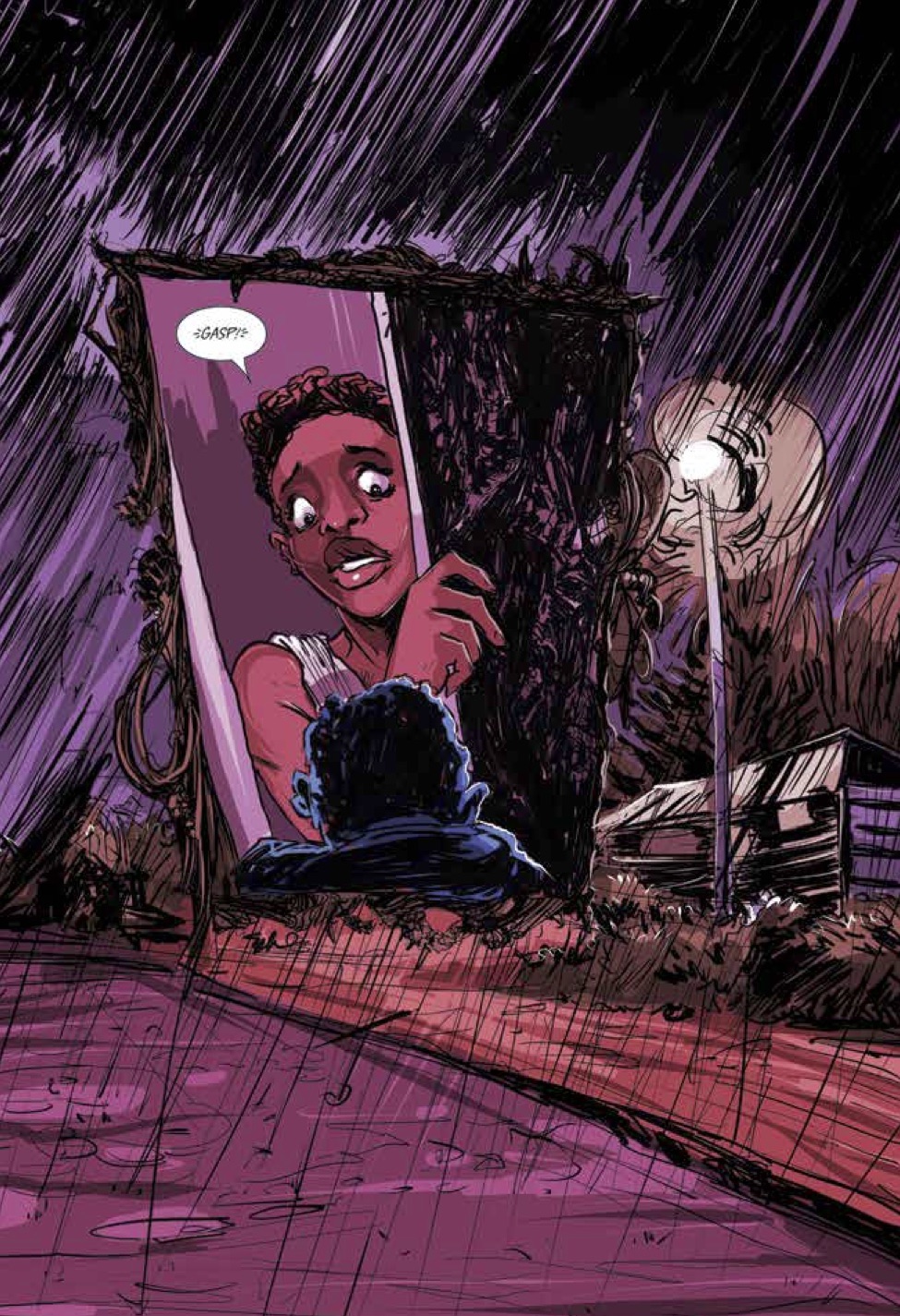
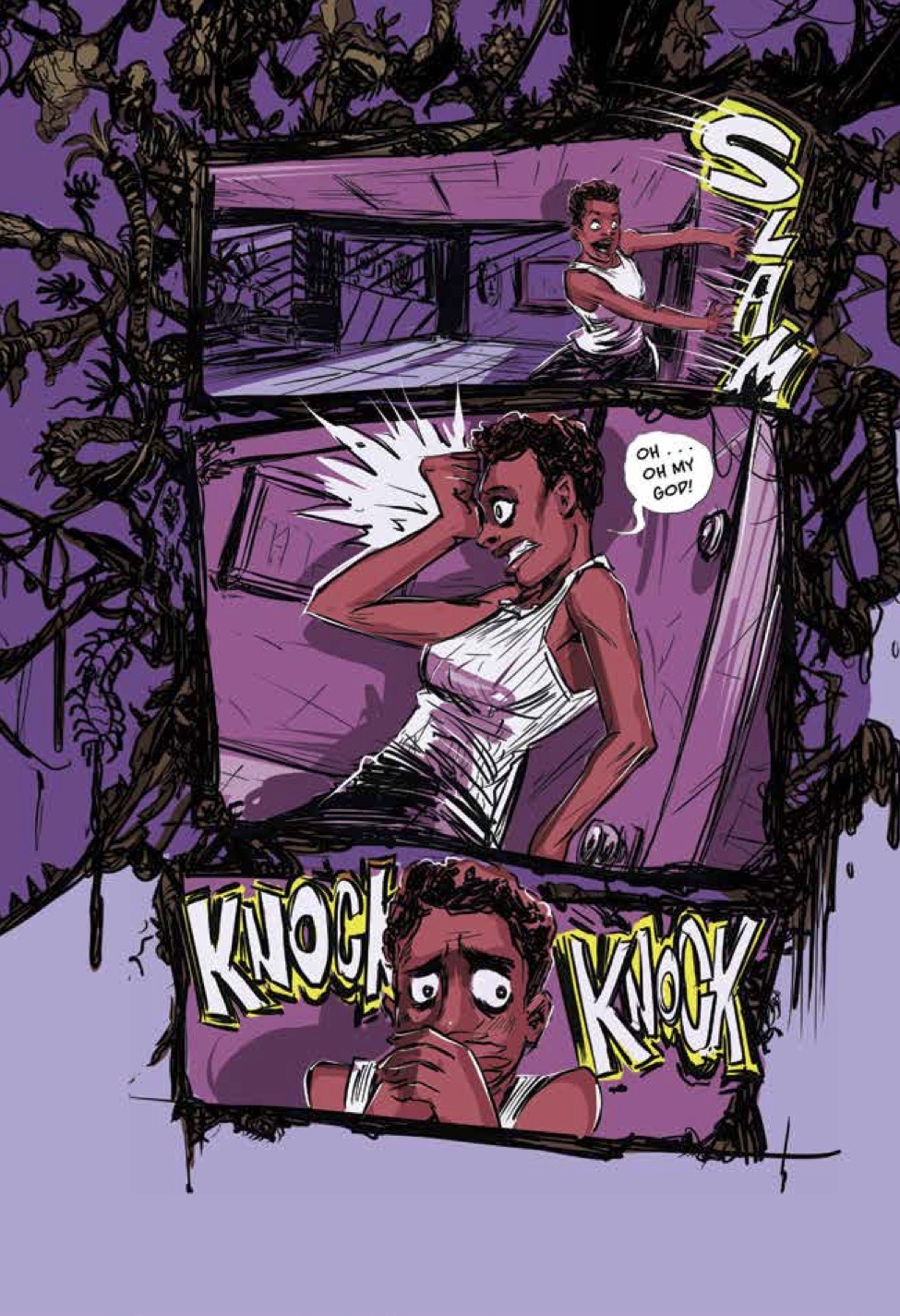
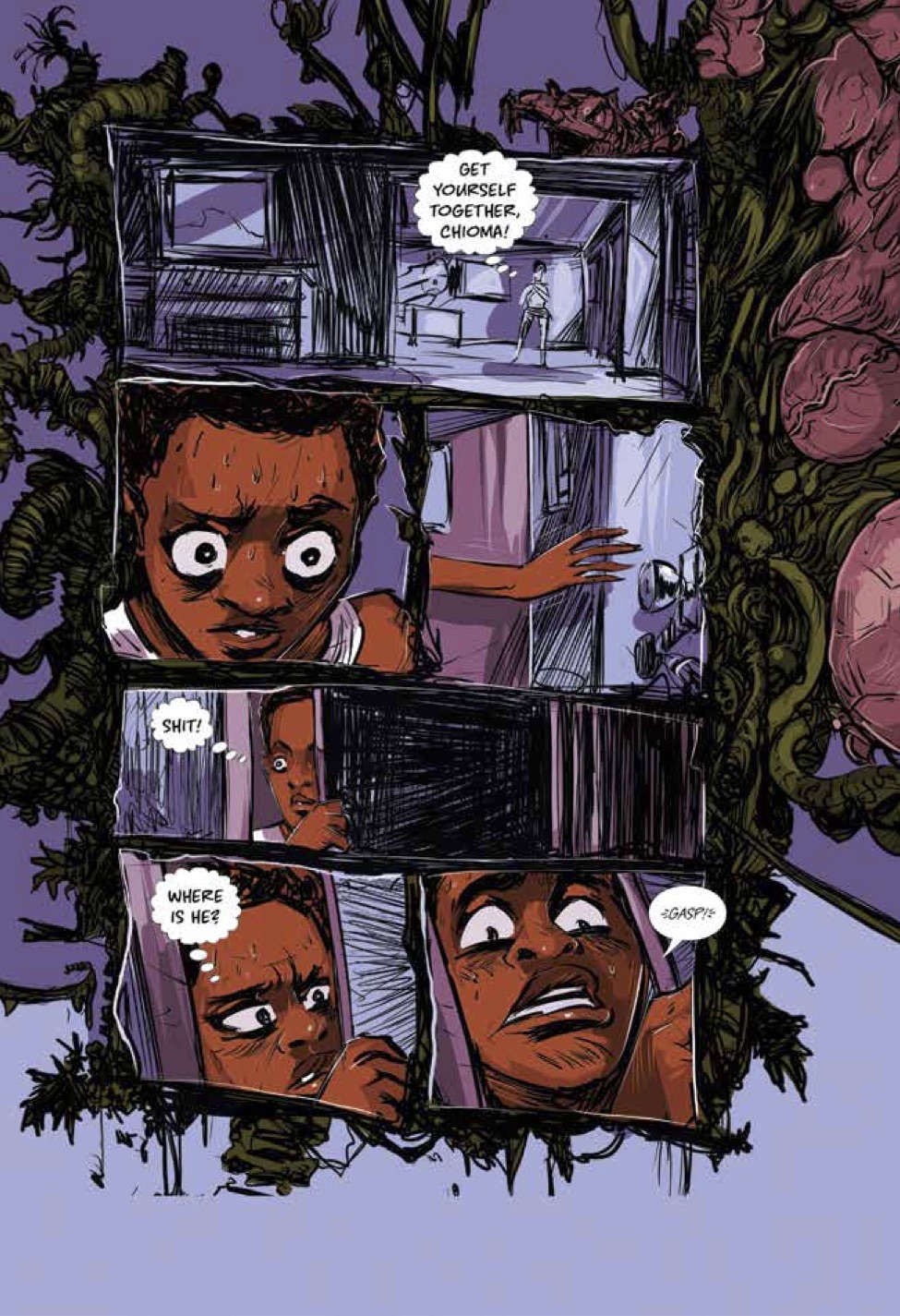
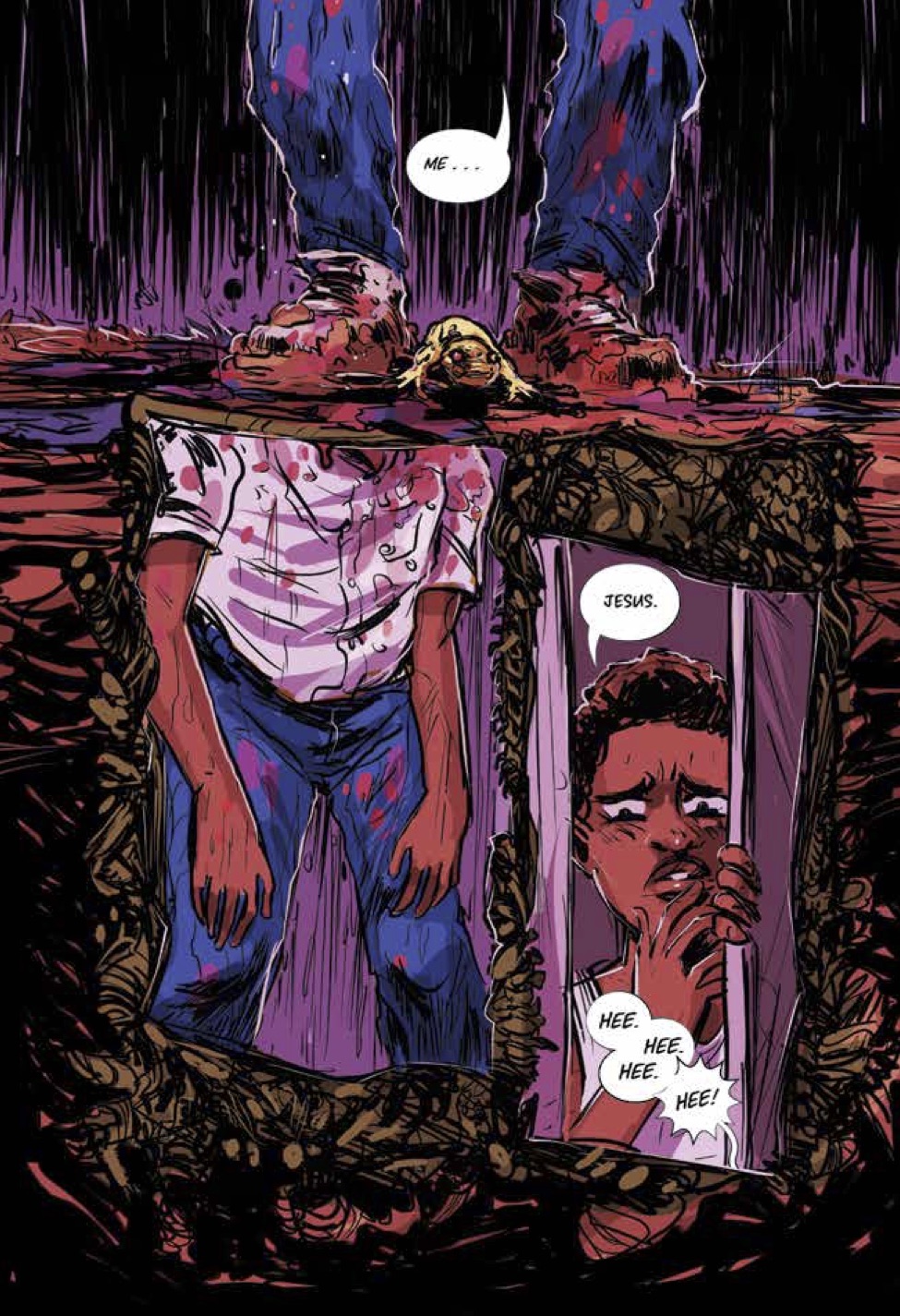
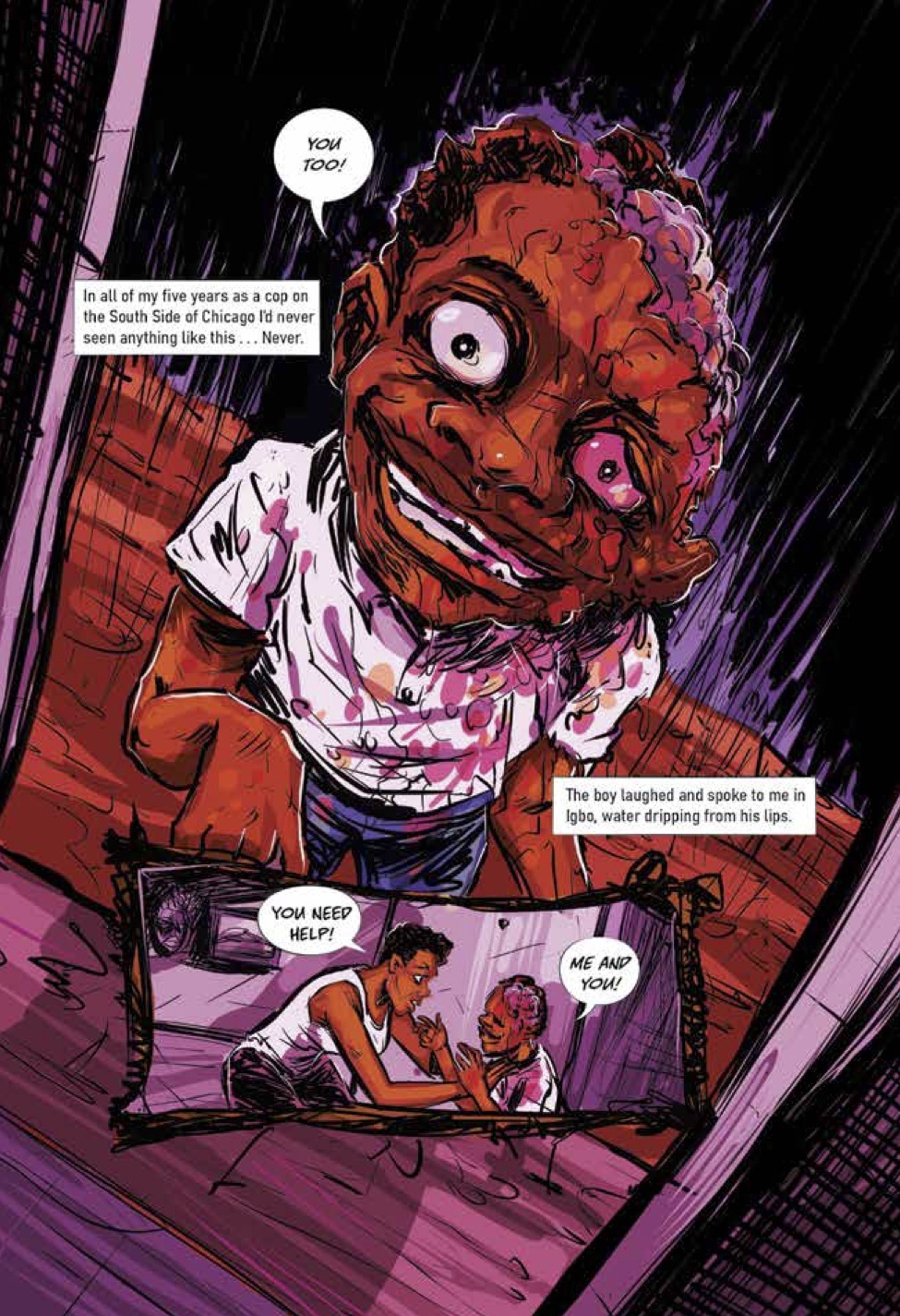
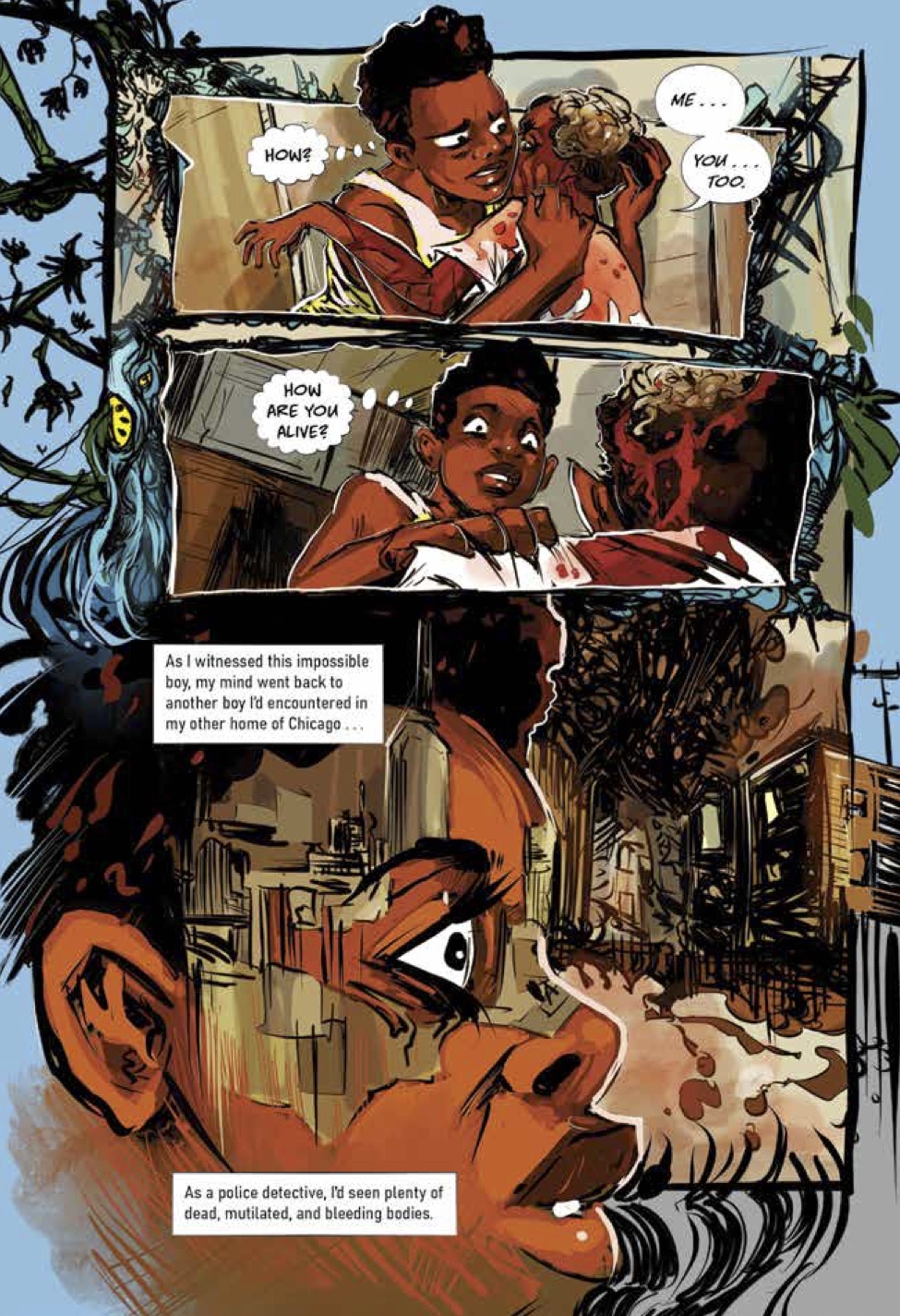
After the Rain will be available at your local bookstore and library beginning tomorrow, January 5th, 2020.


